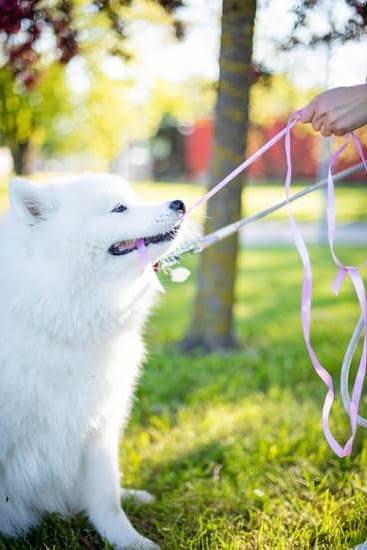When should you start crate training a dog? Crate training is an essential aspect of raising a well-behaved and happy dog, but it’s crucial to understand the right age and signs that your dog is ready for this type of training. In this article, we will explore the benefits of crate training, how to introduce your dog to the crate, common mistakes to avoid, and when to seek professional help for crate training challenges.
Crate training is a valuable tool for both puppies and adult dogs when done correctly. It can provide them with a safe space, help with potty training, reduce anxiety, and prevent destructive behavior. However, it’s important to know when and how to start crate training your dog to ensure their comfort and success with this method.
Understanding the right age for crate training is essential. Puppy owners may wonder when they should begin the process, while those with adult dogs might question if it’s too late. We will delve into these questions as well as signs that indicate your dog is ready for crate training. With proper guidance and patience, you can successfully introduce your furry friend to their new den.
Benefits of Crate Training for Dogs
Crate training can be a valuable tool for dog owners, providing numerous benefits for both the pet and the owner. When should you start crate training a dog is an important question to consider, as it can have an impact on the success of the training process. Let’s explore some of the key advantages of crate training for dogs.
Safe Space and Security
One of the primary benefits of crate training is that it provides a safe and secure space for your dog. The crate serves as a den-like environment where your dog can feel comfortable and protected. This can be especially beneficial during times when your dog may feel anxious or stressed, such as when you have guests over or during thunderstorms.
Aid in Housebreaking
Crate training can also assist in the housebreaking process by encouraging your dog to develop bladder and bowel control. Dogs typically do not like to eliminate in their sleeping area, so using a crate can help reinforce good potty habits and prevent accidents in the home.
Preventing Destructive Behavior
For young puppies or dogs with separation anxiety, crate training can help prevent destructive behaviors such as chewing furniture, shoes, or other household items. By providing a designated space for your dog while you are away, you can minimize the risk of damage to your belongings.
Understanding the Right Age for Crate Training
Crate training is an essential part of raising a well-behaved and house-trained dog. One of the most common questions that dog owners have is when they should start crate training their furry companion. The right age for crate training a dog can vary depending on the breed, size, and individual development of the dog.
In general, it is recommended to start crate training a puppy as soon as you bring them home, which is typically around 8-12 weeks of age. At this stage, puppies are still learning bladder control and developing their natural den instincts. Introducing them to a crate early on can help establish it as a safe and comfortable space for them as they grow.
For adult dogs or rescue dogs that have never been crate trained before, the timing may depend on their individual circumstances. If you have adopted an adult dog, it’s important to assess their behavior and comfort level with confinement before introducing them to a crate. Some adult dogs may require more time and patience to adjust to a crate compared to puppies.
Ultimately, the right age for crate training a dog depends on their individual development and behavior. It’s important to observe your dog’s readiness for crate training and make adjustments based on their specific needs and comfort level. Whether you are starting with a puppy or an adult dog, proper introduction and positive reinforcement will play a crucial role in successful crate training.
Signs That Your Dog Is Ready for Crate Training
Crate training can be a valuable tool for helping your dog feel safe and secure, as well as providing you with peace of mind when you need to leave them at home. However, it’s important to recognize the signs that your dog is ready for crate training before you begin this process.
One of the key indicators that your dog may be ready for crate training is if they consistently seek out a small, cozy space to rest or relax in. This could be under a table, in a tight corner, or even in a DIY ‘den’ they’ve created for themselves. This behavior suggests that your dog naturally finds comfort in enclosed spaces and may be more receptive to the idea of spending time in a crate.
Additionally, if your dog shows signs of anxiety or distress when left alone, crate training can help provide them with a sense of security. Dogs who exhibit destructive behaviors when left alone, such as excessive barking, chewing furniture, or digging at doors, may benefit from the structure and safety of being confined in a crate.
Another sign that your dog is ready for crate training is if they willingly enter the crate on their own without any prompting from you. If your dog begins to view the crate as a safe and comfortable space without any coercion, this can make the entire process much smoother and less stressful for both you and your furry friend.
Understanding these signs will help ensure that your dog is emotionally prepared for crate training and set them up for success in their new learning environment.
How to Properly Introduce Your Dog to the Crate
Crate training a dog can be a valuable skill for both the pet and their owner. Whether you have a new puppy or an older dog, introducing them to the crate in the right way is essential for successful training. Here are some steps to properly introduce your dog to the crate:
1. Choose the Right Crate: The first step in introducing your dog to the crate is choosing the right one. Make sure it is large enough for your dog to stand up, turn around, and lie down comfortably.
2. Make it Comfortable: Add comfortable bedding or blankets to make the crate inviting for your dog. Including some of their favorite toys or treats can also help create a positive association with the crate.
3. Gradually Introduce Your Dog: Start by leaving the crate open in a common area of your home so that your dog can explore it at their own pace. Encourage them with treats and praise when they show interest in the crate.
4. Mealtime in the Crate: Once your dog is comfortable going into the crate on their own, start feeding them their meals inside it. This will further reinforce positive associations with the crate.
5. Leave Them Alone: After your dog is comfortable eating in their crate, gradually start leaving them alone for short periods of time while they are inside. This will help them get used to being in the crate without you present.
By following these steps, pet owners can help their dogs become accustomed to their crates and create positive associations with this space where they can feel safe and secure.
Common Mistakes to Avoid When Crate Training a Dog
Crate training is a valuable tool for pet owners, but it’s essential to understand the potential pitfalls to avoid. One common mistake that owners make when should you start crate training a dog is using the crate as a form of punishment.
The crate should be a positive and safe space for your dog, so it’s crucial not to associate it with any negative experiences. If your dog feels punished or isolated in the crate, they may develop anxiety or fear towards it, making the training process more challenging.
Another mistake to avoid is leaving your dog in the crate for too long. While crates can be great for managing a dog’s behavior and providing them with a secure space, overusing the crate can lead to boredom and frustration. It’s important to gradually increase the amount of time your dog spends in the crate, ensuring that they still have plenty of opportunities for exercise and mental stimulation outside of it.
Additionally, neglecting proper crate sizing is another common error. The crate should be just big enough for your dog to stand up, turn around, and lie down comfortably. If the crate is too large, your dog may be more likely to have accidents inside it since they’ll have enough room to do their business without having to lay in it.
It’s crucial for pet owners to educate themselves on these common mistakes and take proactive measures to avoid them when embarking on crate training their dogs.
| Common Mistakes | Consequences |
|---|---|
| Using the Crate as Punishment | Developing anxiety or fear towards the crate |
| Leaving Dog in Crate For Too Long | Boredom and frustration |
| Neglecting Proper Crate Sizing | Dog may have accidents inside |
Tips for Successful Crate Training
Crate training can be a useful tool for pet owners, but it does require patience and consistency to be successful. Here are some tips to help make your crate training experience as smooth as possible.
Start Early
One of the most common questions that dog owners have is, “When should you start crate training a dog?” The answer is that it’s best to start as early as possible. Puppies can begin crate training as soon as they are weaned from their mother, usually around 8 weeks old. Starting early helps build positive associations with the crate and makes it easier for the dog to adapt to being crated.
Make the Crate Comfortable
When introducing your dog to the crate, it’s important to make it a comfortable and inviting space. Place soft bedding inside, along with some of your dog’s favorite toys or treats. This will help create a positive association with the crate and encourage your dog to willingly enter it.
Use Positive Reinforcement
As with any type of training, positive reinforcement is key. When your dog willingly enters the crate on their own, be sure to praise them and offer treats. This will help your dog associate the crate with positive experiences and make them more likely to go inside voluntarily.
By following these tips, you can set yourself up for success when crate training your dog. Remember, patience and consistency are key, so stick with it even if there are initial challenges. With time and practice, most dogs can learn to be comfortable in their crate.
Crate Training for Puppies vs Adult Dogs
Crate training is a useful tool for both puppies and adult dogs, but there are key differences in the approach you should take when crate training each. Here are some common mistakes to avoid when crate training a dog, regardless of their age:
- Lack of gradual introduction: One mistake many dog owners make is forcing their dog into the crate without proper introduction. This can cause fear and anxiety in the dog, making the crate training process much more challenging. It’s important to introduce the crate gradually, allowing the dog to explore it at their own pace before encouraging them to spend time inside.
- Using the crate as punishment: Another common mistake is using the crate as a form of punishment. The crate should be seen as a safe and comfortable space for your dog, not a place where they go when they’ve done something wrong. Using the crate as punishment can create negative associations with it, making it harder to successfully crate train your dog.
- Inconsistency in routine: Consistency is key when it comes to crate training, whether it’s a puppy or an adult dog. If you’re inconsistent with your approach to using the crate, it can confuse your dog and hinder their progress. Establishing a consistent routine for meals, potty breaks, and time spent in the crate will help your dog understand what is expected of them.
By avoiding these common mistakes and following proper crate training techniques, you can set your puppy or adult dog up for success in learning to love their crate.
When to Seek Professional Help for Crate Training Challenges
It can be a challenging and frustrating experience when your dog is not responding well to crate training. While most dogs will eventually adjust to being crated, there are some instances where seeking professional help may be necessary. Understanding when to seek professional help for crate training challenges is crucial in ensuring that both you and your dog have a positive experience during the training process.
One key indicator that it may be time to seek professional help is if your dog is displaying extreme anxiety or fear towards the crate. This can manifest in behaviors such as excessive drooling, panting, and whining when placed in the crate. Additionally, if your dog shows signs of distress even after gradual introduction and positive reinforcement, it may be best to consult with a professional trainer or behaviorist.
Another indication that professional help may be needed is if your dog consistently displays destructive behaviors while crated. This could include chewing or scratching at the crate, attempting to escape, or soiling the crate despite being properly potty trained. These behaviors may indicate underlying anxiety or fear issues that require the expertise of a professional to address.
If you have tried various methods of crate training without success, it may also be time to seek professional assistance. A professional trainer or behaviorist can assess your individual situation and provide customized solutions based on your dog’s specific needs and temperament. Remember, every dog is unique, and what works for one may not work for another. Seeking expert guidance can make a significant difference in achieving successful crate training for your furry companion.
Conclusion
In conclusion, the right age to start crate training a dog depends on various factors such as the breed, temperament, and individual needs of the dog. It is generally recommended to start crate training a puppy as early as 8-10 weeks old, as this is a critical developmental stage where they are more adaptable and open to learning new behaviors.
However, for adult dogs that have never been introduced to crate training before, it is important to approach the process with patience and understanding.
As discussed, crate training offers numerous benefits for dogs, including providing them with a safe and secure space, helping with potty training, and reducing anxiety and destructive behaviors. Understanding the signs that your dog is ready for crate training and properly introducing them to the crate are crucial steps in ensuring a positive experience for both you and your furry friend.
It is important to remember that successful crate training requires patience and consistency. Avoiding common mistakes such as using the crate as punishment or leaving the dog in the crate for extended periods of time can help prevent negative associations with the crate.
Seek professional help if you encounter challenges or if your dog exhibits extreme anxiety or resistance towards crate training. With dedication and the right approach, crate training can be a valuable tool for fostering a happy and well-behaved canine companion.
Frequently Asked Questions
At What Age Should You Crate Train a Puppy?
The best age to start crate training a puppy is around 8 to 10 weeks old. At this stage, puppies are more adaptable and can learn to feel comfortable in their crate.
When Should I Put My Dog in the Crate at Night?
It’s advisable to put your dog in the crate at night when they are still a puppy, typically up to 6 months of age or until they are fully potty trained. This helps with house training and prevents accidents.
Is It OK to Let Puppy Cry in Crate at Night?
While it can be difficult to hear a puppy cry in the crate at night, it’s essential not to give in to their cries. Most puppies will eventually learn to self-soothe and settle down, but it’s important to respond if they need to relieve themselves.

Welcome to the blog! I am a professional dog trainer and have been working with dogs for many years. In this blog, I will be discussing various topics related to dog training, including tips, tricks, and advice. I hope you find this information helpful and informative. Thanks for reading!





